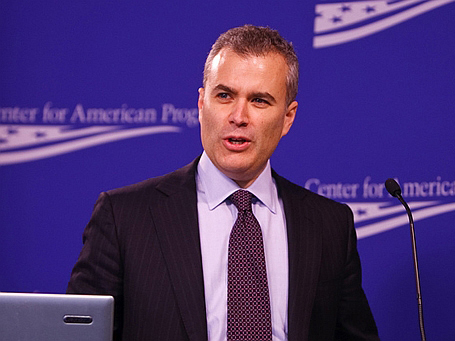White House Budget Office to Agencies: Prepare for Sequestration

WASHINGTON — Acting White House budget director Jeffrey Zients told the heads of federal agencies to continue planning for deep spending cuts that will phase in March 1 if Congress and the White House cannot reach a deal to avert or alter them.
Agencies had already been accounting for budget sequestration in the plans they submitted to the White House Office of Management and Budget (OMB) last year, and Zients’ memo makes it clear that those plans should not be altered just because Congress and the White House delayed the phase-in of automatic spending cuts from Jan. 2 to March 1.
According to Zients’ Jan. 14 memo, “agencies had already engaged in extensive planning for operations under post-sequestration funding levels before this postponement.” Agency leaders, therefore, should “intensify efforts to identify actions that may be required should sequestration occur,” Zients wrote in the memo.
Zients’ memo said agencies should consider ways to reduce civilian work force costs; parse awarded grants and contracts for potential cost savings; and consider using budget reprogramming requests and transfer authority to shore up critical programs if sequestration hits.
NASA alone stands to lose $1.5 billion in a sequester, which is 8.5 percent of its $17.8 billion budget for 2013. The agency is not saying exactly how it might apportion those cuts — it is possible it may never have to — but NASA Deputy Administrator Lori Garver acknowledged Jan. 15 that a sequester would inevitably hobble NASA’s programs.
“We have a very high level of fixed costs,” Garver said at a Washington Space Business Roundtable lunch. “It’s clear that a lot of the accomplishments we had next year would certainly be slowed.”
There are some signals that not every NASA program will absorb an equal share of the cuts. The week of Jan. 7, the head of NASA’s $5 billion-a-year Science Mission Directorate, John Grunsfeld, suggested that the James Webb Space Telescope (JWST) would be spared even if NASA’s top line was reduced in 2014.
Conversely, Jim Green, director of NASA’s Planetary Science Division, which has already been tapped to pay some of the overbudget JWST’s bills, warned that programs outside of the agency’s list of top priorities would bear the brunt of any targeted cuts leadership decides to make.
NASA’s top priorities, as identified by the White House and Congress in 2011, are JWST and the agency’s human spaceflight programs.
Meanwhile, The Hill on Jan. 14, reported confirmation of what had become a widespread assumption: the White House will not deliver a 2014 budget proposal by its Feb. 4 deadline. Zients notified Rep. Paul Ryan (R-Wis.), chairman of the House Budget Committee, of the development in a Jan. 11 letter, The Hill said. This will be the fourth time the Obama administration has failed to deliver a budget by Feb. 4. That date, while legally binding, is by convention treated more as a guideline than a deadline, and other presidential administrations have also missed it.
Policy experts inside and outside the government here speculated that the White House is probably hesitant to put forward a 2014 budget proposal before the budget for the rest of 2013 is settled.
NASA and all other federal agencies have been funded under a stop-gap spending measure, known as a continuing resolution, since the government’s 2013 fiscal year began Oct. 1. That measure is set to expire at the end of March. Government and industry sources here do not expect Congress to approve appropriations for the remainder of 2013 until lawmakers and the administration also reach an accord on the U.S. debt ceiling and sequestration.
Related
ncG1vNJzZmiroJawprrEsKpnm5%2BifHR%2FkWltsKCZqbJutM6uqp5lkqqxqLHTZqafnpmYsm7AzmaYoJ2emLamv4ypqZ6okaeybrLOq2SsnaGqsrTA0ZqroqeeZA%3D%3D